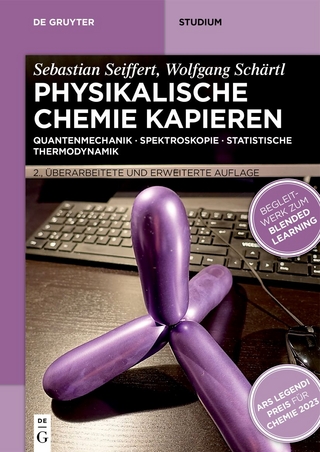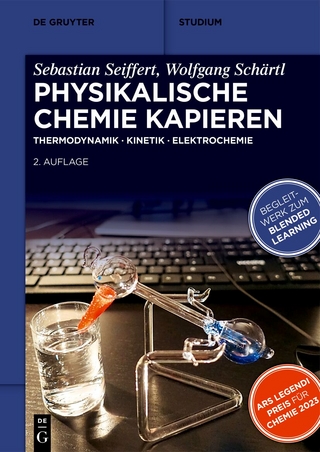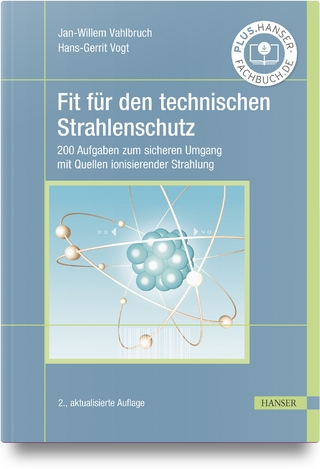
Surface Chemistry – Basic Concepts and Techniques
Blackwell Verlag GmbH
978-3-527-34043-9 (ISBN)
The author combines an experimental and theoretical approach throughout, introducing the most important techniques and using case studies to illustrate how these are applied in practice to problems relevant for surface chemistry and model catalysis. Simple and more advanced problems are included after each case study to encourage readers to develop the central concepts and apply their newly acquired knowledge.
The result is an excellent overview for advanced and postgraduate students entering the field as well as for practitioners.
Herbert Over is Professor of Physical Chemistry at the Justus Liebig University in Gie?en, Germany, since 2002. He studied electrical engineering at the University of Applied Sciences in Bingen and physics as well as mathematics at the Technical University in Berlin, Germany. In 1991 he graduated from the Fritz Haber Institute and received his PhD in chemistry at the Free University in Berlin. Following a postdoctoral appointment at the University of Wisconsin-Milwaukee, he returned to the Fritz Haber Institute in Berlin, where he completed his habilitation in physical chemistry. Then he became permanent research associate at the Max Planck Institute for Solid State Research in Stuttgart, before taking up his current position. His current research interests focus on an atomistic understanding of elementary reaction steps on transition metal oxide surfaces and how this knowledge can be applied in model systems of heterogeneous and electro-catalysis.
INTRODUCTION
What is Surface Chemistry?
Surface Chemistry: Basis for Nanoscience
Surface Chemistry: Applications in Catalysis and Materials Science
Brief History of Surface Science
Somme Illustrative Examples for Surface Chemistry: Ammonia Synthesis, CO Oxidation, Oxidation of Si(100)
TERMINOLOGY AND NOTATION OF SURFACES
TOOL BOX OF SURFACE SCIENCE
Surface Sensitivity and General Instrumentation
Surface Analytic Tools
Surface Structure
Vibrational Spectroscopy
Electronic Properties
Surface Bond Strength
Microscopy
In Situ and in Operando Techniques
Holy Grail: Combine Microscopy with Spectroscopy and Diffraction on the Nanoscale
First Principles Theory in Surface Chemistry
BASIC CONCEPTS IN SURFACE CHEMISTRY
Metal Versus Semiconductor Surface
Surface Energy
Dangling Bonds
Surface Reconstruction/Relaxation
CO Adsorption on Transition Metal Surface: Blyholder Model
Newns-Anderson Model
Adsorption and Desorption of Simple Molecules (H2, O2, N2)
Sabatier, Universal Descriptors
BEP (Bronsted-Evans-Polanyi)Relation
Model Systems
PHYSICAL CHEMISTRY IN TWO DIMENSIONS
Thermodynamics at Surfaces
Transport Properties
Chemical Kinetics at Surfaces
Surface Reaction, Detailed Balance, Langmuir Hinshelwood Mechanism, Mars van Krevelen Mechanism
Microkinetic Modeling of Reactions
CASE STUDIES
Reconstruction of Si Surfaces: Minimizing the Number of Dangling Bonds
How to Visualize Dangling Bonds: Pseudo-Charge Difference Plots
Adsorption of CO on Transition Metal Surface
Adsorption of O2 on Transition Metal Surface
CO Oxidation over Transition Metal Surfaces: Model Reaction in Surface Chemistry
Promotor Action of Alkali Metals in Catalysis
Oxidation of Metal Surfaces: Stability of Metal Catalyst under Oxidizing Reaction Conditions
Ammonia Synthesis over Fe an Ru Based Model Catalyst
CO Oxidation over RuO2(110): Micro Kinetic Simulations
HCl Oxidation over RuO2: Stability versus Activity
Electrolysis: Chlorine Evolution over RuO2 -
Thermodynamics versus Kinetics
Hydrous RuO2: Bifunctional Catalsts
RuO2 Grown on TiO2(110): Model System for a Variety of Different Surface Scientific Questions
OUTLOOK
Strong Metal Support Interaction
Storage Catalyst (Surface Chemistry Beyond Two Dimensions)
Single Site Catalyst (Homogeneous versus Heterogeneous Catalysis)
Combine Solid State Electrochemistry with Heterogeneous Catalysis
Surface Electrochemistry
Electrocatalysis: Battery, Fuel Cell, Electrolysis
Photocatalysis: Solar Driven Water Splitting
Configurational and Energy Control of Reactions
| Erscheinungsdatum | 08.08.2019 |
|---|---|
| Verlagsort | Berlin |
| Sprache | englisch |
| Maße | 170 x 244 mm |
| Themenwelt | Naturwissenschaften ► Chemie ► Physikalische Chemie |
| Technik ► Maschinenbau | |
| ISBN-10 | 3-527-34043-2 / 3527340432 |
| ISBN-13 | 978-3-527-34043-9 / 9783527340439 |
| Zustand | Neuware |
| Informationen gemäß Produktsicherheitsverordnung (GPSR) | |
| Haben Sie eine Frage zum Produkt? |
aus dem Bereich


